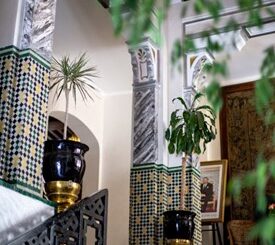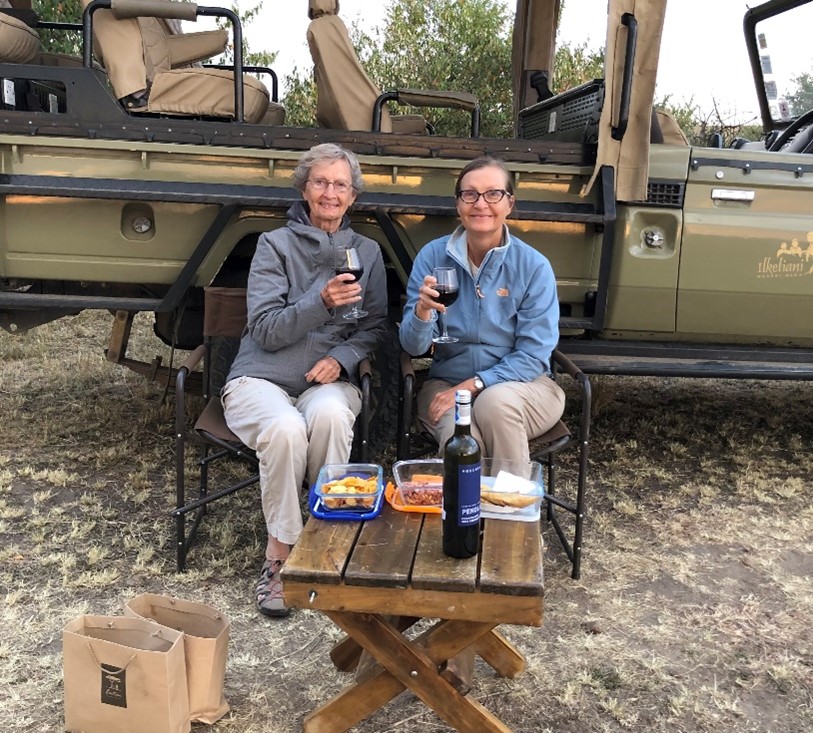Nile River Cruise
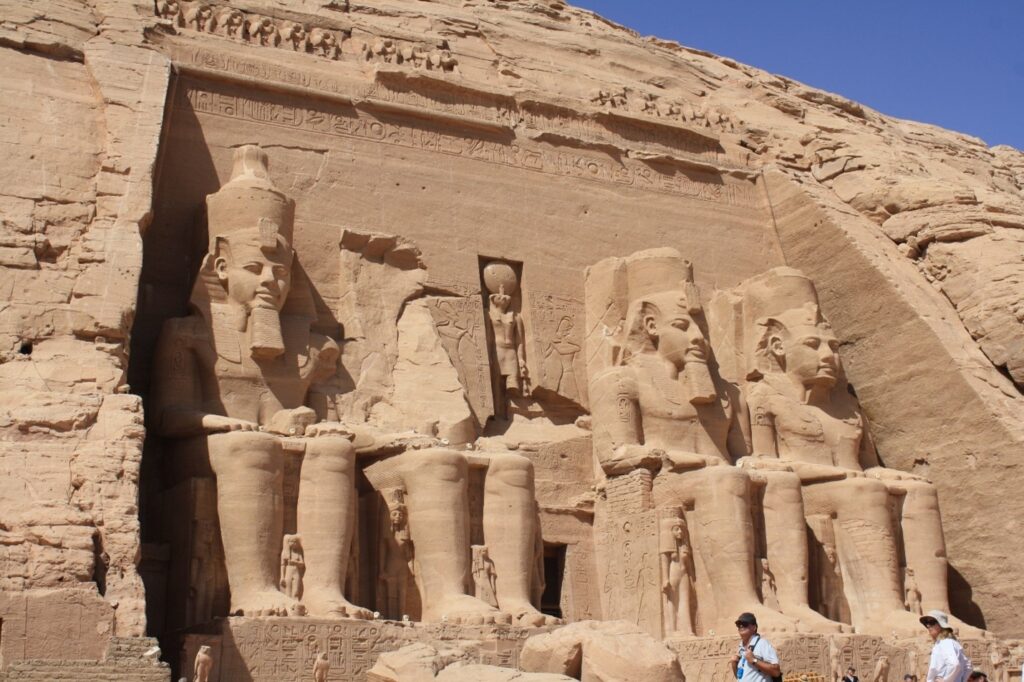
Travel Advice for Seniors: Nile River Cruise
Our 12-day cruise down the Nile was packed with incredible sights of ancient Egypt. For many this is a major bucket list trip and for us it was the same. We had been talking about this trip for quite some time and decided to go with Viking, whom we had traveled with satisfactorily several times.
Following two full days exploring Cairo, we flew to Luxor, a UNESCO World Heritage Site and boarded our ship around lunchtime. Luxor, known as Thebes in ancient times, was constructed around 1400 BC. The Temples of Luxor and Karnak on the east bank are linked by the ancient Avenue of the Sphinxes.Accessible paths, ramps and parking lot.
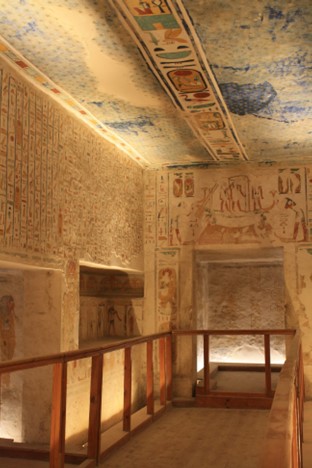
The Temple of Luxor is interesting as it covers many different religious eras of history. In fact, many of the temples and monuments in Egypt that survived from ancient times were modified to conform to the religion/ruling party at the time. Some of the temples were even degraded and/or modified between rulers, with the old pharaoh’s name and face being scratched out to be replaced with the new one.
Karnak Temple was built to worship the sun god, Amun-Ra and is considered to be the home of the god on earth along with his wife and son. It is truly awe inspiring to walk through the statues and the sphinxes at this site.Accessible paths, ramps and parking lot.
Second day of the cruise featured a long-awaited visit to the west bank of Luxor to the Valley of the Kings UNESCO site, a must-visit! Here are the tombs of Egypt’s great pharaohs. It’s not as spectacular as you would think looking from the outside. It’s actually a series of caves carved into hillsides. The real treasure is inside the caves in the colorful drawings, funerary objects and monuments. The discovery of the tomb of Tutankhamun in 1922 made this one of the most famous archaeological sites in the world.Accessible paths, ramps, parking lot and Visitor Center, though not all tombs are accessible.
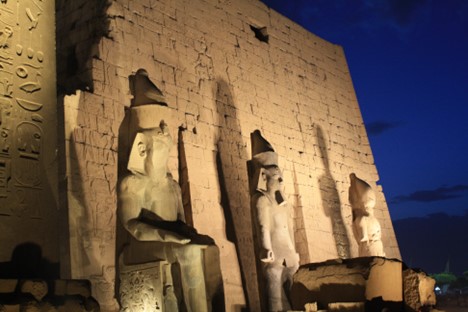
The tomb of Tutankhamun is open for tourists, but a word of caution: It is an extra fee, only a specific amount of people are allowed in at one time so you may have to wait, and DO NOT TAKE PHOTOS. The wall paintings are incredibly well preserved. Many of the artifacts of Tutankhamun’s tomb are in the Grand Egyptian Museum in Cairo, but the tomb is a fantastic visit on its own.
We signed up for a sunrise hot air balloon ride over the Valley of the Kings, which I would not recommend. All you really see is hills with caves in them. Further, we ended up landing in the middle of a goat pasture where village kids were holding out their hands for money while we were stuck waiting in the balloon basket about a half hour for a pick up. At least it wasn’t a “sport landing” where we get dragged through the dust while in a prone position!
Following the Valley of the Kings, we toured the Mortuary Temple of Queen Hatshepsut, which was one of my favorites. It was well excavated and restored. We also toured Madinat Hbu the Mortuary Temple of Ramses III which showed the interesting battles with the “Sea People”. The Mortuary Temple has accessible ramps and entry, but second level may be difficult to navigate. Madinat Hbu is accessible.
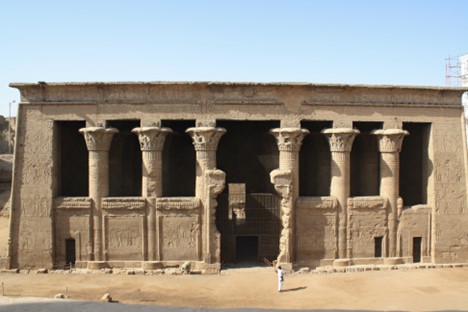
Third day was a horse-drawn carriage ride to Temple of Horus, the falcon god. This is one of the best-preserved temples and in touring it you really get an impression not only of the enormity, but also how majestic and beautiful it must’ve been at the time of building. Note on the carriage ride…some of the animals did not look very well cared for, same for some of the camels at the Great Pyramids. Wheelchair accessible parking lot.
An afternoon sail took us to Kom Ombo, which is unique in that it is dedicated to the god Sobek, the crocodile god, and the god Horus, the falcon god, with a separate entrance hall and sanctuary for each. Parts are accessible, but navigation assistance is recommended.
Fourth Day we arrive Aswan for a visit to the Philae sanctuary, tour of the Nubian Museum and gardens, and a visit to the Aswan high dam. The Philae sanctuary is special in that it was one of the historic temples relocated to make way for the Aswan dam. It features Isis, Osirus and Horus.Not generally accessible.
The Nubians were some of the original inhabitants of the central Nile valley located between central the Nile Valley and south to Sudan. This museum takes you through their lifetime in this region.
The Aswan high dam tour featured an interesting discussion about the controversies surrounding its existence. It was originally constructed between 1960 and 1970 to increase hydroelectric power and to regulate the flooding of the Nile. In the course of that action, many ancient temples and burial sites had to be relocated or were simply flooded.
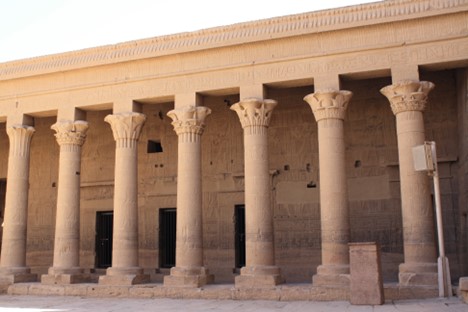
The next day flight to Abu Simbel was a very memorable day. Abu Simbel was built by Ramses II to emphasize his rule and features two incredibly large statues of him at the temple entrance. It is something that you really have to see to understand its immensity. Interestingly, Abu Simbel was one of the temples to be relocated to avoid being submerged in Lake Nasser. Abu Simbel has accessible parking lot and entrance.
The sixth day we passed Kasr Ibrim Fortress on the way to the Amada Temple, one of the oldest in Nubia.
Seventh day was a walk through the Valley of the Lions or Wadi El Seboua, located on an ancient caravan route that linked Egypt to Nubia. Followed by a tour of the Temple of Dakkam dedicated to Thoth, God of Wisdom and the Temple of Meharakka.Not generally accessible.
If by this time you haven’t had enough Egyptian history, the following day included a tour of the Temple of Kalabsha. which is accessible. Wow…that’s a lot of artifacts and history!
We did thoroughly enjoy being submerged for a week in Egyptian history, the only downsides were the extremely aggressive vendors that seemed to be everywhere and that WIFI was very difficult to come by.
Our guide told us the best way to avoid the vendors was to walk briskly straight ahead without making eye contact, which is sometimes difficult as they tend to get very close to you and stand right in front of you. We were visiting less than a year after the Arab Spring in Cairo, so part of the desperation of the vendors and poor shape of the animals may have been due to suspended tourism.
Finally, an important note to remember to take adequate water with you, apply sunscreen and take a hat. Many of the sites were hot, shadeless and didn’t have water.
Any amount of the photos and pre-trip reading can’t prepare you for how huge and awe-inspiring the monuments and temples are in real life. The history of each site comes to life when looking at the colorful carvings and paintings within the sites. It is truly a wonder.
Where we stayed: Onboard the river boat. All meals included. Great accommodation. Some river cruise boats are accessible. Most will have elevators between decks and allow for collapsible wheelchairs, though not for scooters. Note that some will have split level decks and thresholds that are not accessible. Also, crews are smaller for river boats and it is recommended that someone that can help be brought along.
How we got there: Embarked boat Cairo. This was part of a twelve-day cruise on the Nile.
General Accessibility Information: See notes above. Egypt is generally not considered very handicapped accessible, with limited wheelchair accessibility in most places. Some tour operators offer accessible tours, and some high-end hotels are accessible.Several landmarks are accessible including the Luxor Temples, Egyptian Museum, Aswan Dam, and the first floor of the Egyptian Museum of Antiquities. Call in advance to verify and make specialty arrangements.See our sections on specialty apps and accessible travel for more on accessibility assistance.



